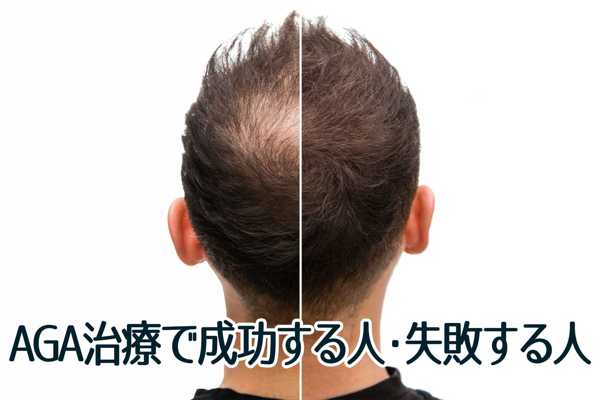プロが教える中古マンション高額売却術|査定額が300万円上がった成功事例公開!
Understanding Triple-Negative Breast Cancer: A Concise Overview
Triple-negative breast cancer (TNBC) is a subtype of breast cancer that is known for its aggressive nature and resistance to common treatments. Unlike other forms of breast cancer, TNBC lacks three key proteins—estrogen receptors, progesterone receptors, and HER2 (human epidermal growth factor receptor 2). This absence makes TNBC harder to treat with traditional therapies, making early detection and comprehensive treatment essential for improving outcomes.
Triple-negative breast cancer (TNBC) is a subtype of breast cancer that is known for its aggressive nature and resistance to common treatments. Unlike other forms of breast cancer, TNBC lacks three key proteins—estrogen receptors, progesterone receptors, and HER2 (human epidermal growth factor receptor 2). This absence makes TNBC harder to treat with traditional therapies, making early detection and comprehensive treatment essential for improving outcomes.

What is Triple-Negative Breast Cancer?
Triple-negative breast cancer is defined by the absence of three specific receptors that are often targeted in other types of breast cancer treatments:
- Estrogen receptors (ER): Estrogen helps fuel the growth of certain breast cancer cells. In TNBC, these receptors are absent.
- Progesterone receptors (PR): Like estrogen, progesterone can influence cancer cell growth. In TNBC, these receptors are also missing.
- HER2 receptors: HER2 is a protein that can promote the growth of cancer cells. TNBC cells do not overexpress HER2, making targeted therapies like Herceptin ineffective.
Because TNBC lacks these receptors, treatments such as hormone therapy, which block estrogen and progesterone, or HER2-targeted therapies, are not effective. Chemotherapy is usually the primary treatment for TNBC.
Causes and Risk Factors of Triple-Negative Breast Cancer
Several factors contribute to the risk of developing TNBC, including:
- Genetics: The BRCA1 genemutation is strongly associated with TNBC. Women with inherited BRCA1 mutations are at a significantly higher risk of developing TNBC, especially at younger ages.
- Age: TNBC is more commonly diagnosed in women under 50, particularly those who are premenopausal.
- Ethnicity: African American and Hispanic women have a higher incidence of TNBC compared to women of other racial groups.
- Lifestyle: A lack of physical activity, obesity, and poor diet can increase the risk of developing TNBC.
- Hormonal Factors: Prolonged use of hormone replacement therapy (HRT)can also increase the risk of TNBC.
Symptoms of Triple-Negative Breast Cancer
The symptoms of TNBC are similar to those of other types of breast cancer and may include:
- A lumpin the breast or underarm
- Changes in breast shapeor size
- Painor tenderness in the breast area
- Nipple inversionor unusual nipple discharge
- Skin changes, such as redness or dimpling
If any of these symptoms are noticed, it is important to seek medical attention as early detection is critical for effective treatment.
Stages of Triple-Negative Breast Cancer
Like other cancers, TNBC progresses through stages that help determine the severity and treatment options:
- Stage 0: Abnormal cells are present in the breast, but they haven’t spread.
- Stage 1: The tumor is localized in the breast or nearby lymph nodes.
- Stage 2: Cancer spreads to more lymph nodes or grows larger.
- Stage 3: Cancer spreads to surrounding tissues or lymph nodes.
- Stage 4: Cancer spreads to distant organs, such as the lungs or liver.
The stage of TNBC at diagnosis significantly impacts treatment options and survival rates.
Treatment Options for Triple-Negative Breast Cancer
Treatment for TNBC generally involves a combination of surgery, chemotherapy, and radiation therapy:
- Surgery: This may involve a lumpectomy(removal of the tumor) or mastectomy (removal of the breast) to remove the cancerous tissue.
- Chemotherapy: Chemotherapy is the primary treatment for TNBC. It is often used before surgery to shrink tumors (neoadjuvant therapy) or after surgery to destroy any remaining cancer cells (adjuvant therapy).
- Radiation: After surgery, radiation therapy may be used to target any cancer cells that remain in the breast or chest area.
- Immunotherapy: Recent advancements in immunotherapy have shown promise for TNBC, especially in more advanced stages. Immunotherapy works by stimulating the body's immune system to fight cancer cells.
Side Effects of Triple-Negative Breast Cancer Treatment
Treatment for TNBC can lead to several side effects, which may vary depending on the treatment used:
- Fatigue: Many patients experience significant tiredness after chemotherapy and radiation treatments.
- Nausea: Chemotherapy can often cause nausea, but medications can help manage this side effect.
- Hair loss: Chemotherapy often leads to temporary hair loss, which can be emotionally challenging.
- Skin Changes: Radiation therapy may cause skin redness, peeling, or irritation in the treated area.
- Lymphedema: If lymph nodes are removed during surgery, fluid can accumulate, causing swelling in the arms or legs.
Managing these side effects is an important part of the treatment process and requires close communication with healthcare providers.
Lifestyle and Diet Recommendations
Maintaining a healthy lifestyle can support the recovery process and improve overall well-being during treatment:
- Diet: Focus on eating foods rich in antioxidants and anti-inflammatory properties, such as leafy greens, berries, turmeric, and green tea. These foods help strengthen the immune system and may help fight cancer.
- Exercise: Regular physical activity can reduce fatigue, improve mood, and enhance recovery.
- Avoid processed foods: Cutting back on processed foods, excess sugar, and unhealthy fats can improve overall health during treatment.
Prognosis and Survival Rate
The prognosis for TNBC depends on the stage at diagnosis. For early-stage TNBC, the survival rate is relatively high, with approximately 91% survival over five years for localized cases. However, TNBC is more likely to recur, especially within the first few years after treatment. For patients with advanced TNBC, the prognosis is less favorable, but ongoing research and new treatments, such as immunotherapy and targeted therapies, are showing encouraging results.
Conclusion
Triple-negative breast cancer is a challenging and aggressive form of breast cancer, but it is treatable with a combination of surgery, chemotherapy, and radiation. Early detection and prompt treatment significantly improve outcomes, and advances in immunotherapy are offering new hope for patients with more advanced stages of TNBC. By maintaining a healthy lifestyle and following a comprehensive treatment plan, patients can increase their chances of recovery and improve their quality of life during and after treatment.











